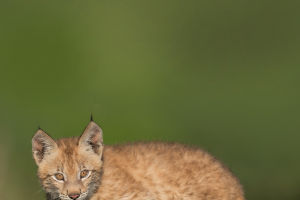There are many kinds of butterflies. According to relevant literature, there are more than 14,000 kinds of butterflies recorded in the world. In order to facilitate people's classification and memory, entomologists divide a wide variety of butterflies into sixteen families according to their morphological structure, evolutionary development and blood relationship, and there are different species under each family.
Butterflies have a pair of bright, radiating compound eyes, which are made up of more than 15,000 small eyes just near the base of their tentacles. They are all hexagonal wedges, large at the top and pointed at the bottom, and the sides of each small eye are close to each other. The world in their eyes is completely different from the world in the eyes of humans. The world in the eyes of butterflies has no color. According to research, the eyes of butterflies can only see black and white; they are very sensitive to light. Under ultraviolet light, butterflies will Sensitive to white, red, blue and yellow objects such as flowers.
Anyone who has caught butterflies knows that there is a lot of powder on the wings of butterflies. These powders look like the scales of fish scales under the microscope, so they are called scale powders, which mainly play the following roles:
1. Waterproof.
2. The pattern composed of scale powder is the contact signal of male and female butterflies, and can also prevent confusion with other species.
3. The scale powder of some male butterflies can emit a special odor. The female butterfly can know the location of the male butterfly based on this odor.
4. The smelly butterflies drive away the predators with their smell, and the birds do not dare to eat it. Although some butterflies have no smell, they can disguise themselves as smelly butterflies in order to protect themselves. There is also a butterfly that relies on its own unique color to disguise itself as a leaf to paralyze the enemy.
5. The color of the scale powder will also change due to the difference in sunlight reflection and heat absorption.
The natural enemies of butterflies are: ants, beetles, lizards and so on.
1. The body of an ant is divided into three parts: head, thorax and abdomen. The size of different ants is very different, and the body length varies from 1 mm to 20 mm. The smallest thief ant is no more than 2 mm in length. The body colors of ants are mostly brown, black, brown and orange-red.
Some have markings, with obvious thin waist between the chest and abdomen, dull or metallic luster. The body of the ant is smooth, or there are outgrowths such as pilose, spines, stripes, reticulates and nodules. Teethless, suitable for eating soft or liquid food. The body of an ant is divided into three parts: head, thorax, and abdomen. It has six legs. The body wall is thin and elastic, with membranous wings, which are hard and brittle.
2. The beetle body is small to large. The body wall is hard, the forewings are hard, keratinized, and form elytra, which meet in a straight line at the center of the back when stationary, and the hind wings are membranous, usually overlapping vertically and horizontally under the elytra. Adults and larvae are chewing mouthparts. The larvae are mostly oligopods, the thoracic legs are usually developed, and the gastropods are degenerated. The pupa is from the pupa. Eggs are mostly round or spherical.
3. The body of lizards is generally divided into four parts: head, neck, trunk and tail. The body epidermis is leathery scales, and some species have small bone plates under the scales, such as skinks, snakes and lizards. Lizards have tiny teeth, and the shape and length of their tongues vary with species. Eyes are more developed, and some species have cranial parietal eyes. Except for most geckos, the eyelids are more mobile, and the eyes of the burrowing type are mostly hidden under the skin.


